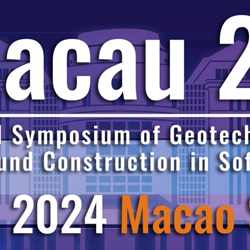Underground Space
Underground Space
Underground Space is an open access international journal without article processing charges (APC) committed to serving as a scientific forum for researchers and practitioners in the field of undergro...
Underground Space is an open access international journal without article processing charges (APC) committed to serving as a scientific forum for researchers and practitioners in the field of underground engineering. The journal welcomes manuscripts that deal with original theories, methods, technologies, and important applications throughout the life-cycle of underground projects, including planning, design, operation and maintenance, disaster prevention, and demolition. The journal is particularly interested in manuscripts related to the latest development of smart underground engineering from the perspectives of resilience, resources saving, environmental friendliness, humanity, and artificial intelligence. The manuscripts are expected to have significant innovation and potential impact in the field of underground engineering, and should have clear association with or application in underground projects. The following are some examples about whether or not a manuscript is considered within the scope of this journal:
- A manuscript on constitutive modeling with no significant connection with underground space is out of the scope of the journal, but a manuscript about constitutive modeling for solving underground space problems such as predicting tunnel deformation and stability is considered within the scope of the journal.
- A manuscript on piling engineering with no significant connection with underground space is out of the scope of the journal, but a manuscript about the interactions between piles and underground structures such as tunnels is considered within the scope of the journal.
- A manuscript on slope stability with no significant connection with underground space is out of the scope of the journal, but a manuscript about the interaction between slopes and underground structures such as tunnels is considered within the scope of the journal.
Call for Papers
Methodologies and Technologies for Future Tunnelling and Underground Space Development
Submission close: 31 August 2025
Special Issue on "Underground solutions for carbon neutral goals”
Submission close: 30 June, 2024
News
Events
The 3rd Symposium for Young Tunnelers of Asia (SYTA) on April 21-23, 2023, Changsha, China
Read the full story

 Hehua Zhu
Hehua Zhu
 Antonio Bobet
Antonio Bobet
 Teruo Nakai
Teruo Nakai





